Sap wood measurements
Now that we have our sap flow instrumentation set up on the trees and shrubs we just monitor the data weekly to make sure that everything is running the way it should be. In an earlier post I talked about what it means to take sap flow measurements. To review, it is the measurement of the velocity of water moving through the trees and shrubs. I also discussed water potential in trees and shrubs, which measures how stressed out the vegetation is during the day. Today we will discuss sap wood core samples and how this data can be combined with the other measurements to get a better idea of not only how quickly the water is moving, but also how much in volume.
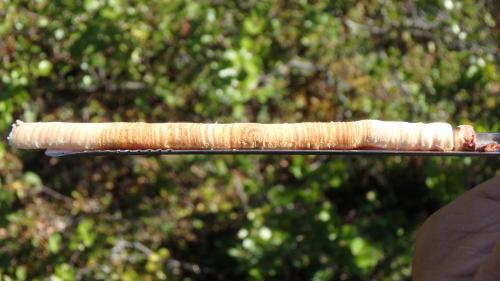 Close up view of a tree core used to measure the cross sectional area of water moving through the tree
Close up view of a tree core used to measure the cross sectional area of water moving through the tree
The process
In order to do this we need to take a core sample of a tree. We chose a tree in the same area where we are taking the other measurements discussed. First, we measure the Diameter of the tree at Breast Height (DBH). Then we find the south-facing side of the tree with a compass, place the tree core at a 90 degree angle to the trunk and start drilling.
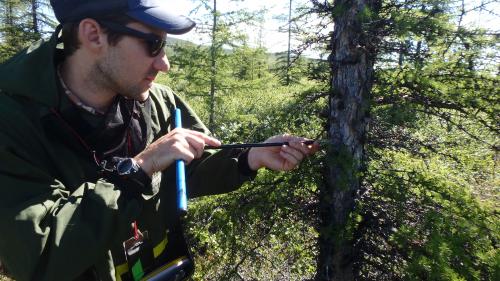 Mike Loranty taking a tree core sample to measure sap wood
Mike Loranty taking a tree core sample to measure sap wood
Once we reach the other side of the tree, we take out the beveled end scoop that fits in the hollow end of the tree core. The hollow end allows us to take a clean core of the interior of the tree from end to end.
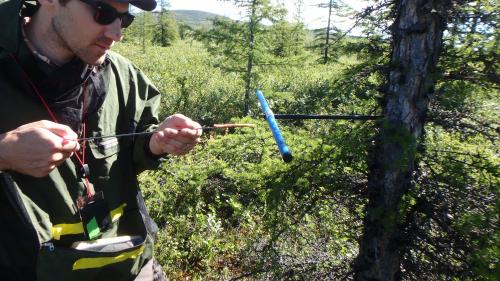 Mike Loranty retracting the tree core out of the hollow drill bit.
Mike Loranty retracting the tree core out of the hollow drill bit.
Now that the core is pulled we need to find out which part is wet and dry. An easy way to do this is by holding it up to the sunlight, rotating it and looking for the most translucent portion. This is the saturated portion. It can be measured with the micrometer on both sides of the center for accuracy.
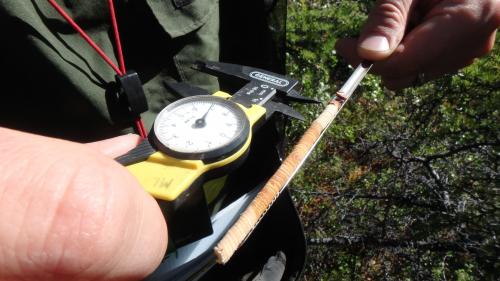 Using the micrometer to measure the area saturated with water
Using the micrometer to measure the area saturated with water
This measurement provides a cross sectional area of the amount of water moving through the tree in the units of centimeters squared (cm2). Combined with the velocity of the water moving through with the units of cm/s, gives us the volume of water moving in cubic centimeters (cm3).
Why?
So why is it important for us to know how fast and how much water is moving through the trees and shrubs? This goes back to that energy budget we discussed in an earlier post measuring the amount of energy moving in and out of the system. The sap flow measurements are logged electronically every half an hour. Combined with the outside air temperature and relative humidity measurements. This will give us a better idea of the volume of water moving through the trees and under what atmospheric conditions. It takes energy to evaporate the water so if more water is moving through it is essentially cooling the surface, but if the plants are stressed then they will close their stomates, absorbing the water and heating up the surface.
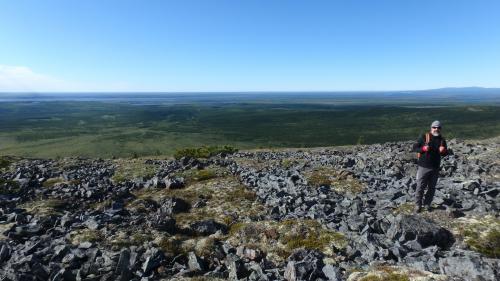 Stan Skotnicki hiking on Rodinka Mountain
Stan Skotnicki hiking on Rodinka Mountain

Comments